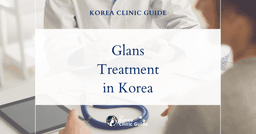Silicone penile implant
Description
A silicone penile implant procedure is a medical intervention designed to address erectile dysfunction (ED) when other treatments have proven ineffective. The procedure typically begins with a thorough consultation to discuss the patient's medical history, expectations, and the different types of implants available—most commonly, malleable (bendable) and inflatable. On the day of surgery, the patient is placed under general or regional anesthesia to ensure they are comfortable and pain-free. A small incision is made at the base of the penis or in the lower abdomen, through which the surgeon carefully inserts the silicone rods or inflatable cylinders into the erectile tissue of the penis. For inflatable implants, a pump is also placed in the scrotum or abdominal wall, allowing the patient to control penile rigidity manually. The procedure generally takes between one to two hours and, once completed, the incisions are sutured closed and bandaged. Post-operative care includes a recovery period during which the patient is monitored for any signs of infection, bleeding, or implant malfunction. Pain management, typically involving prescribed painkillers, is an essential component of the immediate recovery phase. Patients are usually advised to refrain from sexual activity and heavy physical exertion for 4 to 6 weeks to allow for proper healing. Follow-up consultations are crucial to ensure the implant is functioning correctly and to provide additional guidance on how to use the device if it is inflatable. Overall, a silicone penile implant can significantly enhance the quality of life for individuals struggling with ED, restoring both physical function and emotional well-being.
Ailments treated by this procedure: Peyronie’s Disease Sclerosis and End-stage Erectile Dysfunction
Search
Categories
Related Posts




Top Silicone penile implant Clinics
Yezak Urology
Apgujeong Rodeo, Gangnam-gu Office Station
Free consultation from the clinic
Yezak Urology in Apgujeong is a men’s health center offering specialized surgical and non-surgical care delivered by a multi-specialist team with advanced safety systems. Male Enhancement Penile Enlargement: Procedures to increase penile girth using autologous fat grafting or biocompatible fillers, performed by urologic surgeons. Surgeons aim to improve circumference and proportion while preserving sensation and erectile function. Penis Lengthening Surgery: Release of the suspensory ligament with skin advancement to increase visible flaccid length. Postoperative traction protocols support length gains and tissue healing. Glans Enlargement: Filler-based augmentation of the glans penis to enhance contour and address sensitivity-related concerns. The plan targets a natural look and balanced feel. Premature Ejaculation Treatment: Care options include topical therapy, behavioral training, glans augmentation, and nerve-modulating procedures after evaluation. Treatment addresses timing control and sexual satisfaction. Peyronie’s Disease Treatment: Management of curvature and plaque with collagenase injections, traction therapy, plication, or grafting surgery. The objective is penile straightening, pain relief, and functional restoration. Genital Plastic Surgery: Corrective and aesthetic procedures such as frenuloplasty, scrotoplasty, and scar revision. The focus is on function, symmetry, and cosmetically refined results. Prostate Care Benign Prostatic Hyperplasia (BPH) Treatment: Comprehensive care using medications, minimally invasive therapies, and surgical options such as TURP or laser enucleation. The goal is to relieve urinary obstruction, protect bladder and kidney health, and improve quality of life. Prostatitis Treatment: Targeted therapy for acute and chronic prostatitis with antibiotics, anti-inflammatories, pelvic floor therapy, and tailored lifestyle guidance. Care addresses pelvic pain, urinary symptoms, and sexual health impacts. Erectile Dysfunction Inflatable Penile Implants: Three-piece hydraulic devices placed surgically to provide on-demand erections with a natural appearance when deflated. This option serves men who do not respond to medication or prefer a definitive surgical solution. Malleable Penile Implants: Bendable silicone rods implanted to provide reliable rigidity without pumps. They offer straightforward use and durability with discreet positioning. Non-Surgical ED Treatments: Pharmacologic therapy such as PDE5 inhibitors and intracavernosal injections, plus device-based care like vacuum devices and shockwave therapy. Management also addresses cardiovascular and hormonal contributors to ED. General Male Health Circumcision: Surgical removal of the foreskin for medical, hygienic, or personal reasons under local or regional anesthesia. Modern methods emphasize precise hemostasis, clean wound edges, and efficient recovery. Vasectomy: Permanent contraception by sealing the vas deferens through a no-scalpel approach. The procedure uses local anesthesia with brief downtime and follow-up semen analysis to confirm success. STD Diagnosis & Treatment: Confidential testing for common sexually transmitted infections with evidence-based antimicrobial therapy. Counseling and partner management support prevention and long-term sexual health. Male Menopause (Andropause) Care: Evaluation and treatment of age-related hormonal changes, fatigue, mood changes, and sexual symptoms. Care includes lifestyle optimization, targeted medications, and monitored testosterone therapy when indicated. General Health Checkup: Comprehensive men’s health screening covering urinary, sexual, metabolic, and cardiovascular systems. Preventive guidance and timely referrals are provided based on results.
learn more
Stantop Urology & Andrology
Sinnonhyeon Station
Free consultation from the clinic
StanTop Urology & Andrology Clinic is a specialized medical institution dedicated to improving the quality of life for men and women both domestically and globally through advanced urological and andrological treatments. The clinic provides separate consultation and treatment rooms for men and women to ensure comfort and privacy. Penile Enlargement Penile Enlargement: This procedure increases penis girth and sometimes length through injectable fillers or surgical methods. Glans Enlargement: Similar to penile enlargement, this involves the enhancement of the glans (head) to increase its size and appearance. Premature Ejaculation Treatment for Premature Ejaculation: Methods include medication, behavioral techniques, and sometimes surgical interventions to delay ejaculation and improve sexual performance. Lengthening Penile Lengthening: Surgical or non-surgical techniques that increase the length of the penis. Erectile Dysfunction (ED) Inflatable Implant: A three-piece penile implant that provides a natural erection by pumping fluid into cylinders surgically placed in the penis. Malleable Implant: A semi-rigid implant that allows the penis to be positioned as needed for sexual intercourse. Stem Cell Therapy: Regenerative treatment to improve erectile tissue and restore normal erectile function. Shockwave Therapy: Non-invasive treatment using acoustic waves to stimulate blood flow and improve erectile function. Male Clinic STD Check-Up: Comprehensive testing for sexually transmitted diseases to diagnose and commence timely treatment. Circumcision: Surgical removal of the foreskin for medical or personal reasons. Vaseline Removal: Surgical removal of foreign substances from the penile tissue. Vasectomy: A permanent form of male contraception involving the cutting or sealing of the vas deferens. Prostate One Day Check-Up: Fast and comprehensive testing for prostate health, including PSA levels and digital rectal exams. BPH (Benign Prostatic Hyperplasia): Treatment options including medication, minimally invasive procedures, and surgery to relieve symptoms of enlarged prostate. Prostatitis: Diagnosis and treatment for inflammation of the prostate, typically involving antibiotics and other medications. VIP Service Personalized Care: Tailored treatment plans and dedicated facilities to ensure comfort, privacy, and high-quality care for VIP patients. StanTop Urology & Andrology Clinic is KBS recognized and boasts over 100,000 patient consultations and 40,000 surgeries performed, ensuring expertise and trust in their specialized services.
learn more
Blue Urology
Yeongdeungpo Station
Free consultation from the clinic
Blue Urology in Yeongdeungpo provides comprehensive, patient-centered care for urinary and men’s health concerns. General and Diagnostic Procedures Cystoscopy: A thin scope is inserted through the urethra to inspect the bladder and urethra. It helps diagnose causes of blood in urine, recurrent infections, pain, or urinary blockage. Uroflowmetry: A noninvasive test that measures how fast and how much you urinate. It helps evaluate urinary obstruction, weak bladder, or treatment results. Urodynamic testing: A set of tests that measure bladder pressure and function during filling and voiding. It guides treatment for incontinence, urgency, or difficult urination. Prostate ultrasound: An ultrasound probe images the prostate to assess size and structure. It evaluates nodules and helps guide targeted biopsies. Prostate biopsy: Small tissue samples are taken from the prostate using a needle under ultrasound guidance. Pathology checks for cancer to confirm diagnosis and plan care. Prostate and Bladder Care Transurethral Resection of the Prostate (TURP): A surgical scope removes excess prostate tissue through the urethra to relieve blockage from BPH. It improves urine flow and reduces frequency, urgency, and nighttime urination. Laser prostate surgery: A laser is used through a scope to remove or shrink obstructing prostate tissue. It aims for faster recovery and less bleeding than traditional surgery. Botox injection for overactive bladder: Botulinum toxin is injected into the bladder wall via cystoscopy to calm overactivity. It reduces urgency, frequency, and leakage when medications are not enough. Pelvic floor therapy and biofeedback: Guided exercises strengthen pelvic muscles to improve control. It helps stress incontinence and supports recovery after prostate treatments. Stone Management Extracorporeal Shock Wave Lithotripsy (ESWL): Focused sound waves break kidney or ureteral stones into small fragments. The pieces are then passed naturally with urine. Ureteroscopy (laser stone removal): A thin scope is passed into the ureter or kidney to see and fragment stones with a laser, then remove them. A temporary stent is sometimes placed to keep urine flowing and reduce swelling. Stone analysis and prevention plan: Passed or removed stones are analyzed for composition. Diet, hydration, and medications are tailored to reduce the chances of new stones. Men’s Health and Fertility Vasectomy: The vas deferens tubes are sealed through tiny skin openings for permanent contraception. It is an outpatient procedure with quick recovery and does not affect sexual function. Varicocele repair: Enlarged scrotal veins are tied off through a small incision to improve comfort and semen quality. Microscopic techniques reduce pain, recurrence, and complications. Erectile dysfunction evaluation and treatment: Testing and counseling identify causes and options such as medication, vacuum devices, or injections. Care is individualized to restore reliable erections and sexual confidence. Premature ejaculation treatment: Behavioral strategies, topical anesthetics, and medications are combined to improve control. Counseling addresses performance anxiety and relationship factors. Scrotal and Penile Surgery Circumcision: The foreskin is removed to treat recurrent infections, scarring, or personal preference. Modern techniques focus on precision, comfort, and cosmetic outcome. Hydrocele repair: A fluid-filled sac around the testicle is removed or repaired through a small scrotal incision. The goal is to relieve swelling, heaviness, and discomfort. Spermatocele removal: A benign cyst arising from the epididymis is excised while preserving nearby structures. Surgery relieves lump-related discomfort and cosmetic concerns. Penile curvature correction: Sutures are placed to straighten curvature that interferes with function. This improves sexual function and reduces pain from Peyronie’s disease.
learn more



